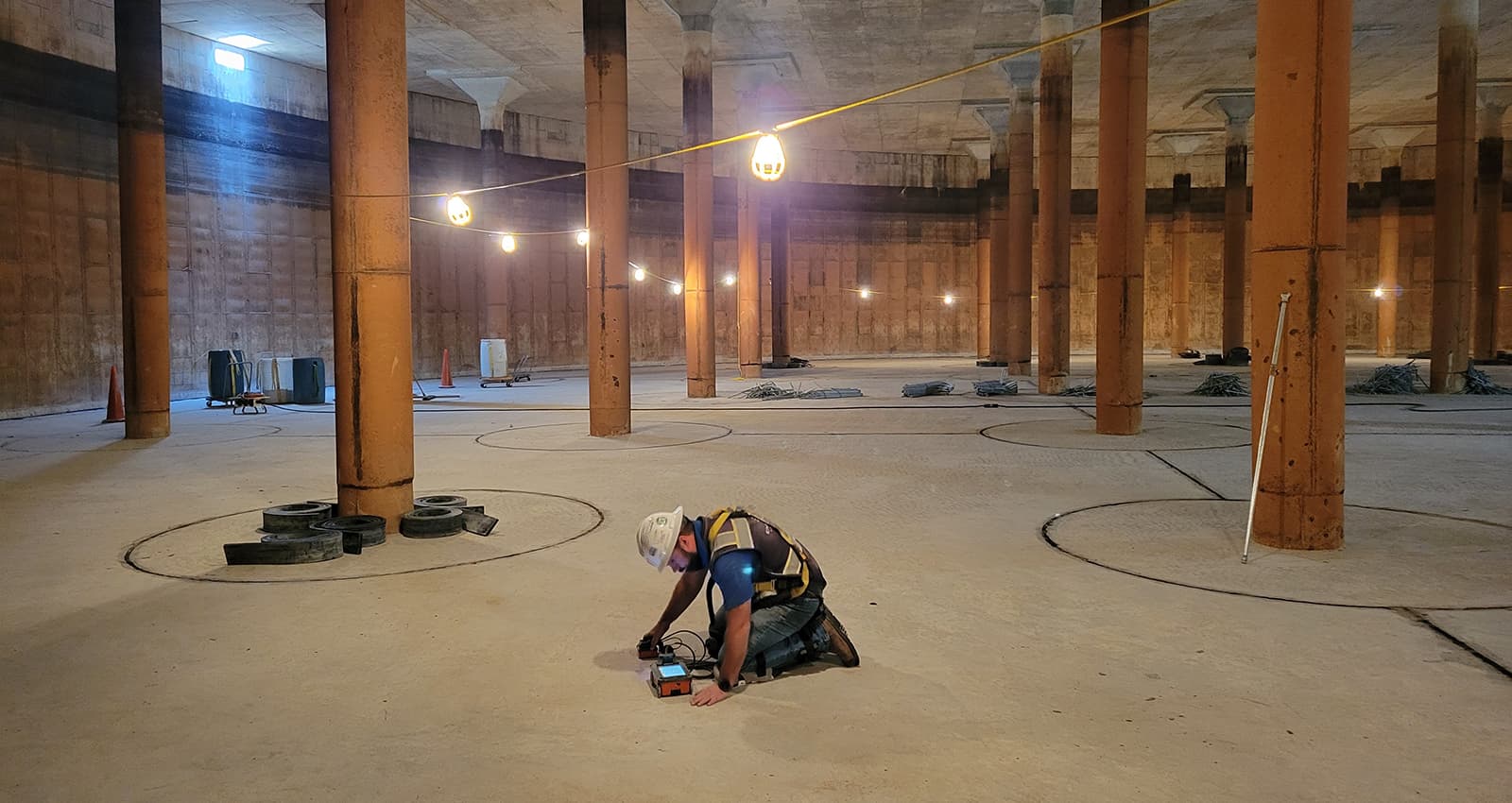
Remember back in 2008 and 2009 when construction projects were halted mid-build? Those in the construction industry certainly do. It seemed like the entire industry went from boom to bust almost overnight.
For one builder who had plans to build three sets of condos, the building process was stopped after only one set was finished. The other two sets were put on hold shortly after the concrete slabs were poured. The slabs were covered with sod and stayed that way for many years.
When the time came to resume building, the owner decided to make some changes to the original plans, but since the concrete pads had already been sleeved for the original design, implementing the new design would require coring into the concrete—in 130 different places. Now, coring into a concrete slab isn’t difficult, but you do need to make sure that you don’t damage the structural reinforcements—in this case, post-tensioned cables.
The builder brought in Enhanced Scanning, a company that provides GPR scanning services, to locate the post-tensioned cables in the areas that they wanted to drill. According to the team at Enhanced Scanning, “Post-tensioned cables are great because they allow concrete slabs to be more stable, while also being thinner. The downside is, if you need to cut into the concrete down the road, and you accidentally hit a cable, the cable can snap, much like a rubber band. A snapped cable has the potential to cause serious injury or even death. Ideally, you wouldn’t ever cut into a post-tension slab after the concrete is formed, but sometimes plans change.”
Enhanced scanning used a 1.6 GHz ground penetrating radar (GPR) antenna to scan every location on the concrete in which the builder wanted to core. In some cases, the proposed coring location was free from post-tensioned cables, while in other cases, an alternative location needed to be used.
When the day came to core the slab, everyone was a little nervous. Would they be able to avoid post-tensioned cables, even though they were disturbing the concrete in 130 separate locations? Fortunately, the answer was “yes.” Because the team at Enhanced Scanning had accurately located the post-tensioned cables, the contractor didn’t hit, or even nick, one post-tensioned cable! Had they not brought in GPR scanning services, the contractor almost certainly would have hit one or more post-tensioned cables.
Ultimately, because of a successful GPR scan of the concrete, the condo project was able to move forward without any injuries or delays!
When it comes to disturbing concrete slabs with post-tensioned cables, it’s always better to be safe than sorry. Fortunately, bringing in GPR scanning services to evaluate the concrete is easy and cost-effective.












